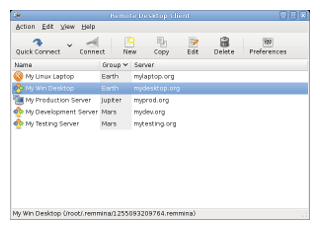Geek Software of the Week: Plex!
 So, a media server. It serves out media on your computer to your local area network (LAN) and makes it available to other PCs, and devices internal to your network. Well, Plex is that… but MUCH more! There is also a Plex client for Roku! In your Roku account just enter code word “Plex” and you can add the Plex app to the Roku, and get stuff streamed from your Plex Media Server software on your local network PC! But wait, there’s more!
So, a media server. It serves out media on your computer to your local area network (LAN) and makes it available to other PCs, and devices internal to your network. Well, Plex is that… but MUCH more! There is also a Plex client for Roku! In your Roku account just enter code word “Plex” and you can add the Plex app to the Roku, and get stuff streamed from your Plex Media Server software on your local network PC! But wait, there’s more!
“The solution for your local and online media. Plex/Nine is a flexible Media Center made up by two major components – the Plex Media Server and numerous Plex Clients. This lets you create a true server-based Media Center where information about all your media is stored in one single location. Plex/Nine also gathers information or metadata about your media and displays it in the Client making choosing which show to watch a rich and pleasant experience.
Plex on Your Desktop
Experience your media on a visually stunning, easy to use interface on your TV. Your media has never looked this good!
Plex for Mobile Devices
Effortlessly connect to all of your favorite local and online content, all presented seamlessly on your iPhone, iPad, iPod Touch and Android devices.
LG Connected Devices
LG Electronics has integrated the Plex platform technology into its 2011 Netcast™ enabled HDTVs and LG Smart TV Upgrader, making the Plex experience available through a range of products from a global leader in consumer electronics.”
 Hummmmm… IBM thinks that you do! They are predicting a technology (already under development) that will allow your computer (via a headset that you will wear) to “read your mind” and allow you to control the compouter! Sounds cool to me! Especially for gaming! Imagine moving your space craft in a game via mental instructions! I like it!
Hummmmm… IBM thinks that you do! They are predicting a technology (already under development) that will allow your computer (via a headset that you will wear) to “read your mind” and allow you to control the compouter! Sounds cool to me! Especially for gaming! Imagine moving your space craft in a game via mental instructions! I like it! Cross-posted from the Hand Held Hack:
Cross-posted from the Hand Held Hack: This is REALLY, REALLY handy! Remmina is an RDP client for Linux. It is in the Fedora “Add/Remove Software” “store”… just be sure to install the plugins as well!
This is REALLY, REALLY handy! Remmina is an RDP client for Linux. It is in the Fedora “Add/Remove Software” “store”… just be sure to install the plugins as well!

